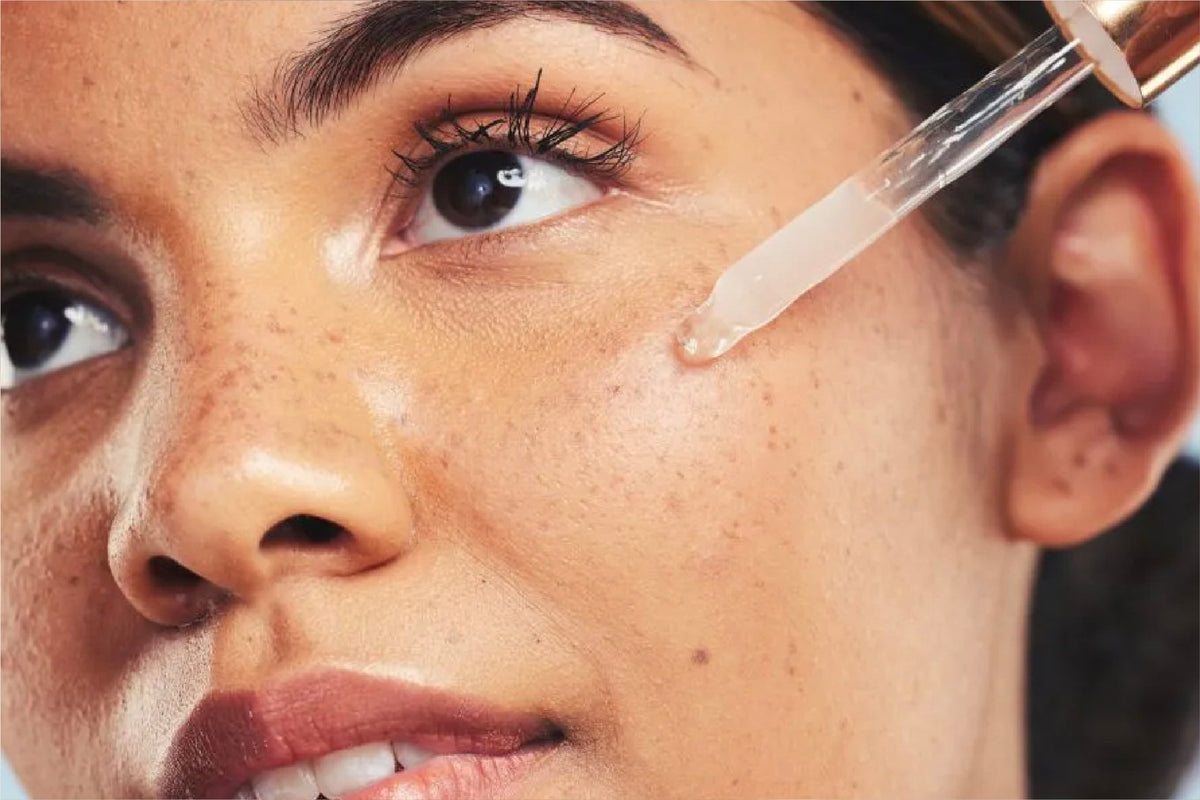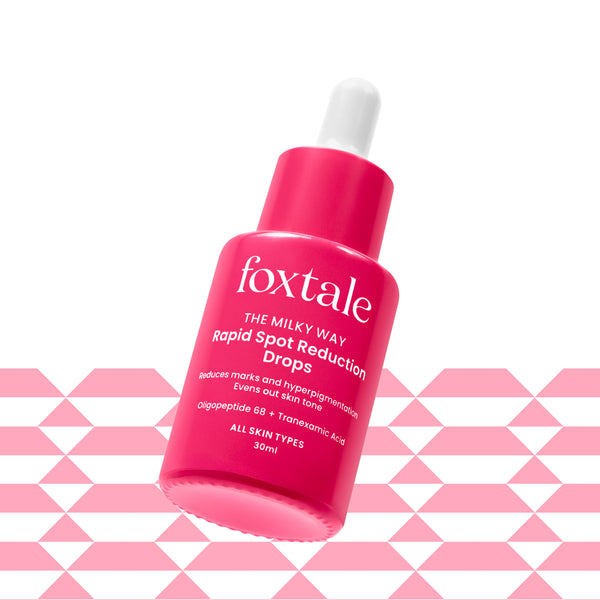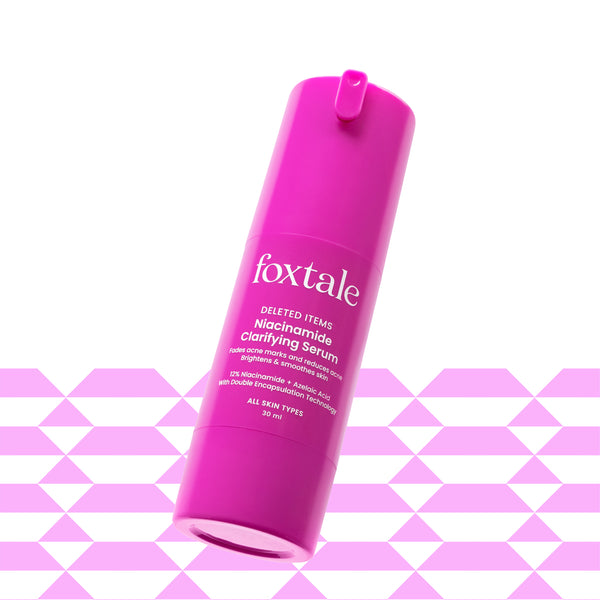
If you’re dealing with pigmentation, melasma, or post-acne marks, you’ve likely come across Tranexamic Acid and Niacinamide. Both are powerful ingredients known for brightening the skin and calming inflammation. But can they be used together?
Yes—and not only are they compatible, they actually complement each other. When paired properly, Tranexamic Acid and Niacinamide help fade discoloration, support the skin barrier, and improve overall tone with minimal irritation.
Let’s break down what each ingredient does, why they work so well together, and how to use them in your routine.
What Is Tranexamic Acid?
Tranexamic acid is a synthetic derivative of the amino acid Lysine. Originally used in medicine to reduce bleeding, it’s now popular in skincare for treating stubborn pigmentation. It works by interrupting the chemical signals that trigger excess melanin production, helping fade dark spots and improve skin clarity.
Benefits of Using Tranexamic Acid for Skin
- Reduces hyperpigmentation: Diminishes dark patches and discolouration over time.
- Calms skin inflammation: Helps soothe redness and irritation.
- Fades dark spots and melasma: Especially effective for UV-induced pigmentation.
- Brightening uneven skin tone: Promotes a more uniform complexion.
- Reducing redness: Supports calm, even-toned skin.
- Improving skin barrier: Pairs well with barrier-repairing ingredients.
What Is Niacinamide?
Niacinamide, also known as Vitamin B3, is a water-soluble vitamin known for its multi-tasking benefits in skincare. It strengthens the skin barrier, balances oil production, reduces pigmentation, and soothes inflammation—making it a favorite for all skin types, especially sensitive or acne-prone skin.
Niacinamide Benefits For Skin
- Reduces excess oil: Regulates sebum production for balanced skin.
- Minimizes pores: Visibly tightens and smooths pore appearance.
- Pigmentation: Fades dark marks and uneven patches.
- Bumpy skin texture: Refines roughness and uneven areas.
- Acne marks: Helps fade post-blemish discoloration.
- Reduces redness: Soothes irritation and supports calm skin.
Quick Comparison Table – Tranexamic Acid vs Niacinamide
|
Feature |
Tranexamic Acid |
Niacinamide |
|
Key Action |
Reduces pigmentation, calms redness |
Balances oil, evens tone, strengthens skin |
|
Ideal For |
Melasma, dark spots, sun damage |
Acne-prone skin, sensitivity, oily skin |
|
When to Use |
Best at night; safe for AM with SPF |
AM and PM use; beginner-friendly |
Can You Use Tranexamic Acid and Niacinamide Together?
Yes, you can—and they work better as a team.
Do They Work Well Together?
- Synergistic effects on pigmentation: Tranexamic Acid inhibits melanin production, while Niacinamide blocks melanin transfer—giving you a two-pronged approach to fading spots.
- Suitable for sensitive and acne-prone skin: Both ingredients are non-sensitizing and ideal for reactive or breakout-prone skin types.
- Compatible pH levels: Each works within a similar pH range, so they layer well without interfering with each other’s performance.
Skin Concerns They Target as a Duo
- Melasma
- Post-inflammatory hyperpigmentation
- Uneven skin tone
- Dullness
Together, they provide a gentle but effective solution for stubborn discoloration and lackluster skin.
How to Layer Tranexamic Acid and Niacinamide in Your Routine
Both ingredients can be used in the same routine or spaced between morning and evening.
Morning vs Night Routine
- AM Routine:
Cleanser → Niacinamide Serum → Moisturizer → Sunscreen
- PM Routine:
Cleanser → Niacinamide → Tranexamic Acid Serum → Moisturizer
Apply Niacinamide first, let it absorb fully, then follow with Tranexamic Acid for face. They layer easily without pilling.
Sun protection tips with usage
If you're targeting pigmentation, daily sunscreen is non-negotiable. Use broad-spectrum SPF 30 or higher every morning, even indoors, to prevent UV-induced pigment from coming back.
Things to Keep in Mind When Using Them Together
While generally gentle, it’s still smart to take precautions:
- Uncommon but possible dryness or tingling: Some may experience mild irritation initially—this often subsides with consistent use.
- Patch test recommended: Especially important if your skin is sensitive or reactive.
Tips for Sensitive Skin Types
- Start with low concentrations: Choose products with 5% Niacinamide and 2–3% Tranexamic Acid.
- Alternate days if needed: Give your skin time to adapt by using them on different nights at first.
- Use barrier-supporting moisturizers: Look for formulas with Ceramides, Hyaluronic Acid, or Glycerin to keep your skin comfortable and hydrated.
With time, most skin types can tolerate both ingredients in daily use.
Conclusion
So—can Tranexamic acid and Niacinamide be used together?
Absolutely. Not only are they compatible, but they also reinforce each other’s actions. Tranexamic Acid tackles pigment production at its root, while Niacinamide soothes inflammation, strengthens the skin barrier, and prevents further discoloration.
Together, they create a powerhouse duo that addresses hyperpigmentation, dullness, and redness.
FAQs
Can I use Tranexamic Acid and Niacinamide on the same day?
Yes. You can layer them in one routine or use them at different times of day—they work well either way.
Is Tranexamic Acid safe?
Yes, it’s considered safe for most skin types when used in skincare concentrations and paired with sunscreen.
Is Niacinamide good for dry skin?
Definitely. Niacinamide strengthens the skin’s moisture barrier and helps reduce water loss, making it a great choice for dry or dehydrated skin.





